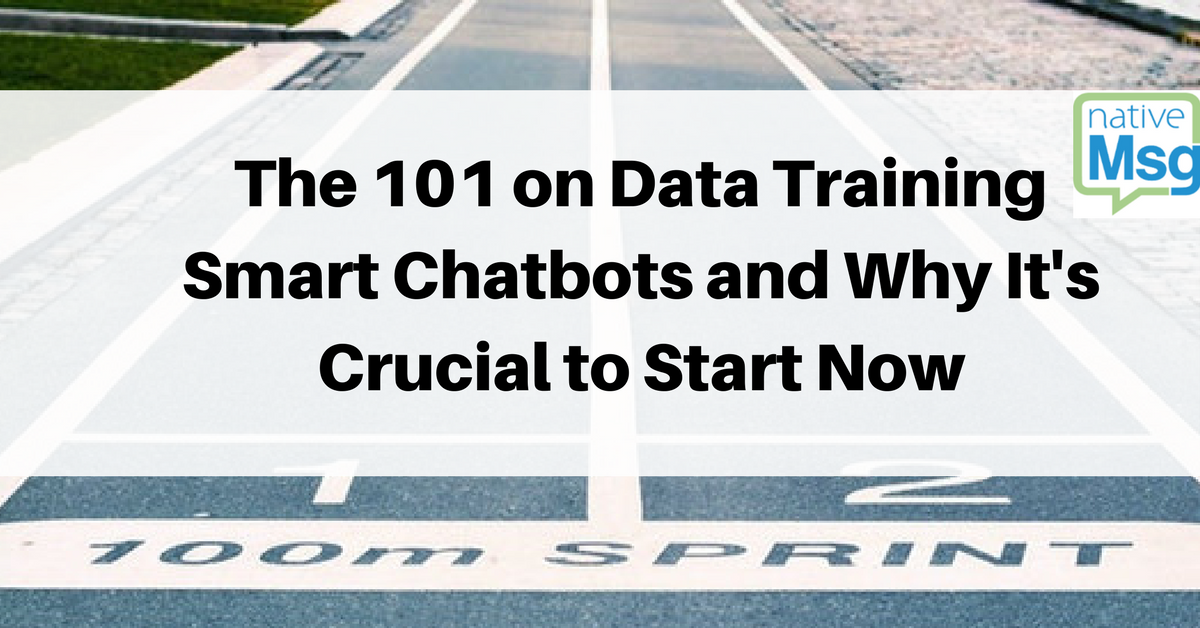
2018 might be the year you become a teacher–of sorts. That’s if you’re part of the savvy cache of business owners and brands that realize successful chatbot deployment includes training your chatbot to grow smarter. Or, if you want to be part of that successful group, get ready to put your “prof” hat on. Here’s what to know about training data chatbots to get smarter. Most importantly, learning takes time. If you want a high and consistent percentage of successful exchanges, you need to start now to train data effectively.
Many organizations have been (improperly) directed to do something like this: Set up a chatbot, launch it, market it, watch as the tech works impeccably with your customers or staff and sit back and relax. The end. If that’s all that it took to deploy a smart chatbot, wouldn’t all businesses have hopped on intelligent chatbots sooner? It can be confusing tech as the landscape changes fast, so lest this sounds holier-than-thou, this is a normal first stab to start.
Why Building a Smart Bot is Important- Now
However, this article will give you, as the decision maker for your organization, the gist of what’s entailed on the development side. In the long-term, an intelligent chatbot that’s nurtured through relevant AI updates, as it gains more information, is optimal. It enables a business to provide exceptional service that’s correct, more timely than ever before, and more convenient than any other customer service orientation before.
But to do that, it takes time via training. Starting now ensures a better experience. Data and feedback generated from both preliminary engagement as well as other data assets can inform algorithmic data training. In turn, this builds a more precise lexicon of correct responses and feedback.
We’ll take a specific look at how to do this well. Don’t worry, your eyes won’t glaze over with technical jargon. Use this as a resource for marketers, CTOs, CMOs- or anyone who isn’t a developer.
First a Quick “101”: Rule-based vs Intelligent Bots
Rule based bots do work and they can work well and relevantly for the right application. But since this article centers on building a brighter bot, that responds with more nuance and more appropriately, over time, we’ll define this simply here.
Rule-based Chatbots

A rule-based bot is trained to answer simple as well as complex questions that have been pre-programmed. Developers can use “Artifical Intelligence Mark-Up Language”, code that is based on XML, to write these rules.
However, its handicap becomes apparent if you veer off the road map of the pre-set pattern.
For example, a rule-based chatbot that helps you book a flight may provide you with the correct information for booking, timing, pricing and seat assignment. But let’s say you want to address special accommodations for in-airport transport between flights, and these accommodations are specific to an illness, age-group or limitation, you would need to extensively program multiple rules to match these considerations.
Would that offer the optimal service?
At the heart of it, a rule-based chatbot isn’t comprehensive in nature.It wouldn’t be the right tool, nor could it best provide for the needs of this particular example.
Instead, many organizations do begin with a rule-based approach that serves as a hand-off to live-agent support, known as a hybrid solution, which you can learn more about here.
But the very fact you’ve hit a limit reveals the necessity for creating and training smart bots.
Intelligent Chatbot- What is it?
There are a few markers that determine whether a chatbot is intelligent:
Can the Bot Pass the “Turing test”?
If a user can’t distinguish between a computer and human, a machine has passed the Turing test. Currently, that’s the bull’s-eye in development. But, while it’s a purist goal, it isn’t the set-point or necessary for an organization to reach. Instead, successful, intelligent conversational interfaces fall somewhere in a closer range to this by learning and developing better answers.
Also, while the back-end development goal is to create a seamless, indistinguishable user-experience, the reality is consumers want to know they’re speaking to a chatbot. They also still desire an experience as if they’re speaking to a live-agent.
Can It “Learn”?
This is the foundation to aim toward. Generally, there’s a few models of AI or smart bots to do so: Retrieval models and Generative models.
Retrieval model:
These AI bots use machine learning, whereby a well-developed algorithm can adjust for super sets of simple-to complex queries. You can think of this like a rule-based chatbot with the addition of machine learning, so that the response rate is more correct, more of the time, in complex scenarios of “digested” or programmed questions. But it’s not the most comprehensive AI.
Generative models:
This AI is where the next frontier lies. These models are based in explicit-learning, meaning that they take words and grammar literally, so that in the short term, answers can be underwhelming and incorrect (though not all the time!).
However, this is where effective training plays a part.
In the long-run, these models learn, based on syntax, spelling and experience through machine learning training. Training includes Natural Language Processing (NLP) and Natural Language Understanding (NLU). Over time, these chatbots become smarter and more precise as a result. Consequently, they are more adept at handling nuance, queries and in creating a more life-like end-user experience.
Machine Learning is Key
It sounds easy enough. But the reality is, a good user experience requires an interwoven, brain-like, system of algorithms. Machine learning is a group of about 10 algorithms that analyze and understand data. Machine learning includes relationality, associative analysis, probability, averaging different models for better results, and analyzing similarities.
To create the most effective software for your brand, it’s important to have a basic understanding of data training chatbots. It will save you time in identifying the right development team.
How to Approach Training Data Chatbots- Properly
As a business owner, you’ll want to understand the correct practices for training and refining data.
The best practice is to train as follows:
- Gather and train with data through all inbound sources. There are a number of internal data sources to use, such as customer service records or support documentation.
- Gather real-time analytics. Monitor interactions to apply these toward more correct responses.
- Train for semantics. Again, this helps developers understand how to garner better results by what’s not working and to attune data goals to align with input.
- Train for personalization. Your chatbot will interact with an array of personas. Addressing response sets and noting the nature of the transaction, whether it’s positive or negative, for instance informs how to train the data to respond in a satisfying and productive way for various groups.
- Train for accuracy. Are you hitting the mark? You’re testing for accuracy and that means you train the data to land more closely within the target.
- Train improvements often. This means making updates for better results, based on these steps. This training isn’t a long-term process, but should be part of your service for the first many months to a year upon launch.
A Real-World Application:
Let’s say you want to go from point A to point B in your city, so you access “transport bot” to help you.
Sounds easy so far.
But there’s multiple layers involved in producing a simple response. On the user end, you simply want an answer. You could care less that there’s multiple schedules, multiple stops for a bus or train.
There is a vast amount of ways travelers can have a conversation and relay every piece of information.
Let’s say you, as the user, text, “I want to go to ‘Chuck’s Coffee Shop.’” How should the chatbot respond?
This is where well-placed algorithms and talent in design comes into play. Let’s say you also add the following:
USER: “I’m currently at Maple and Washington.”
TRANSPORTBOT: “Where are you currently?”
USER:“C above.”
TRANSPORTBOT: “Where are you currently?”
Uh oh.
In a human, real-life conversation, customers might just follow-up with that additional piece of information while a chatbot is replying with the first question. This frustrating loop throws off the conversation and user trust.
Training your data for a chatbot to grow smarter, means training it to pause at appropriate times to respond to incomplete information, including slang, as in,”C above.”
Well-trained, smart-chatbots address variables better than rule-based bots, so your user doesn’t have to contend with an experience like this one. When users have great experiences that give them the information they want, they come to trust that the technology is sound and that it’s a much more convenient way to interact digitally.
In every industry, AI and machine learning is making ground to upend the way we engage customers and employees. Building an effective––intelligent––chatbot takes time. But the cost is significant if you don’t make a start sooner, rather than later.
In a few short years, stats point to an overwhelming surge in conversational UI. Eighty percent of businesses may have one in the next two years But it’s possible to create this convenience, responsiveness and engagement––now.
Want to learn more about how a conversational site or component can create huge engagement, easier lead-building and better brand experience? Get in touch with nativeMsg for a customized solution for your business.
Free Trial
Get Started With RCS
Business Messaging!
Unlock the power of RCS and revolutionize your customer engagement.



